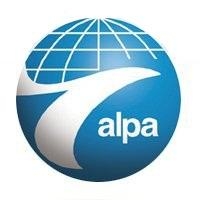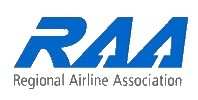Letter To Acting Administrator Huerta Stresses Flexibility In Certification Standards
Three organizations have written a letter to acting FAA administrator Michael Huerta urging the agency to grant flight hour credit to current pilots based on their airline training and experience as they draft new regulations to raise certification standards for newly hired airline pilots. ALPA, Airlines for America and the Regional Airline Association, are all signatories to the letter.

The Airline Safety and Federal Aviation Administration Extension Act of 2010 (the Act) requires that, effective August 2, 2013, all pilots in FAR 121 air carrier operations possess an Airline Transport Pilot certificate (ATP). The Act also required the FAA to conduct a rulemaking to “modify requirements for the issuance of an airline transport pilot certificate.” The Act gave the FAA latitude, in consultation with experts, to determine whether flight hour credits should be given to ATP applicants based on pertinent academic achievement and thereby reduce the number of hours needed to qualify for the ATP certificate. The Act required the FAA to issue a final rule to address these issues not later than 24 months after the August 1, 2010 date of enactment, namely, August 1, 2012.
In the letter, the groups say that "it is important that the FAA act on this NPRM and issue a final rule before August 1, 2013. Industry would benefit from knowing, as soon as possible, what actions they will need to take in order to be fully compliant with the new requirements. Without such certitude, hiring, training and scheduling practices are being negatively impacted today at numerous carriers, and the effects are felt by the companies and their flight crew employees.
"An additional concern is current pilots employed by FAR 121 airlines that will not meet the provisions of the FAA proposed regulation to qualify for the ATP certificate. Many of these pilots have been flying in airline operations for a considerable amount of time and have successfully completed initial training, a number of recurrent training cycles, and a number of line evaluations.

"We would also request that you consider the inclusion of a provision in the final rule issued in response to this NPRM that would give flight hour credit to these individuals based on their airline training history and experience that would qualify them for the “restricted” ATP proposed or the current ATP. We would suggest at least 13 months of employment at the FAR 121 airline. This would cover successful completion of initial training, a number of line evaluations, and at least one recurrent training cycle. Accordingly, we would respectfully request that the FAA expeditiously issue a final rule on part 121 pilot certification and qualification requirements. We would be pleased to discuss this matter with you, as desired."

On its blog The Partisan Pilot, ALPA says the flexibility is important to its pilots who have an established career, but who may not meet the requirements needed for an ATP. An ATP will be required by law for all pilots in FAR 121 operations effective August 2, 2013.
ALPA says that granting experienced and professional pilots credit for their training and employment experience will allow them to qualify for a new “restricted” ATP that will ensure ALPA pilots remain in the air and do not experience a break in employment as a result of the new rules.
 ANN's Daily Aero-Term (10.01.25): Secondary Radar/Radar Beacon (ATCRBS)
ANN's Daily Aero-Term (10.01.25): Secondary Radar/Radar Beacon (ATCRBS) ANN's Daily Aero-Linx (10.01.25)
ANN's Daily Aero-Linx (10.01.25) NTSB Final Report: Cessna 190
NTSB Final Report: Cessna 190 Airborne Affordable Flyers 10.02.25: MOSAIC Start Date, AFE25 Tickets, ePulitzer
Airborne Affordable Flyers 10.02.25: MOSAIC Start Date, AFE25 Tickets, ePulitzer ANN's Daily Aero-Term (10.02.25): Radar Contact Lost
ANN's Daily Aero-Term (10.02.25): Radar Contact Lost





